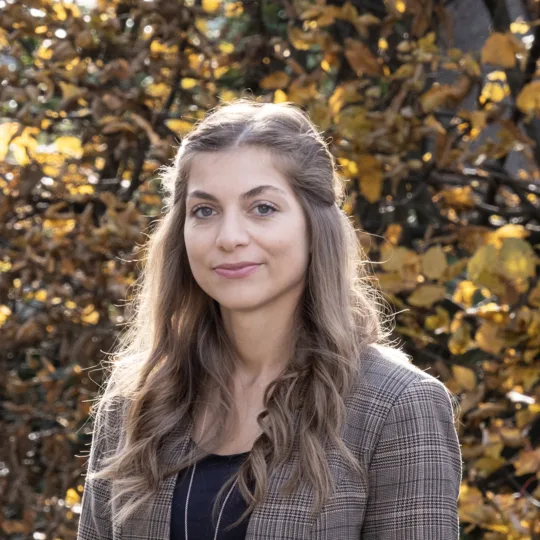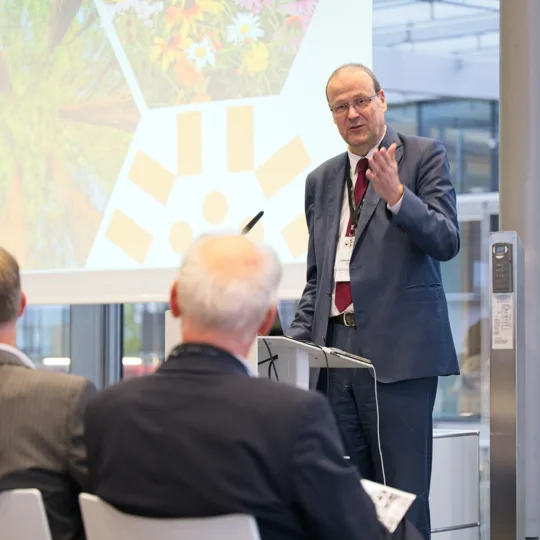The power of multilateral research: ITER
Pushing the boundaries of science and technology to solve the challenges of tomorrow sometimes requires nations to work together to achieve what no single nation can do alone. The construction of the ITER thermonuclear reactor is a perfect illustration of the advantages of multilateralism in research and innovation. Switzerland will resume its participation in this research infrastructure on 1 January 2026.

Mastering nuclear fusion is a strategic priority for the future of our society. With its abundant fuel supply, lack of long-lived radioactive waste, and an inherently safe reactor, fusion promises a clean, reliable answer to the energy needs of a modern society concerned about its carbon footprint.
However, reproducing the conditions found at the heart of stars remains a major scientific and technological challenge, and one that is at the top of the agenda for the most advanced nations of the world. In 2006, the EU, China, India, Japan, Russia, South Korea and the United States decided to unite under the ITER Organization to build ITER – the International Thermonuclear Experimental Reactor – an extraordinary infrastructure that aims to demonstrate the industrial feasibility of nuclear fusion.
Unlocking the full value of multilateral collaboration
Five thousand people work on the 42-hectare site in Cadarache (France) every day. At 30 metres in diameter and weighing 23,000 tonnes, the ITER tokamak will be the largest ever designed and one of the most complex machines ever built. The first scientific results are expected in 2034.
Pooling the costs of such an infrastructure is an obvious reason for using a multilateral international organisation. However, it is not the only one. Multilateralism also makes it possible to put the expertise and production chains available within member states at the service of a common project. At the same time, it fosters the dissemination of new knowledge and skills throughout these states. ITER's superconducting cables, for example, are produced by different members to stimulate the development of future industrial sectors. ITER is therefore already generating technological and industrial spin-offs in all the states involved.
Shared values as the foundation for cooperation between nations
As well as helping to overcome scientific and technical obstacles, multilateralism connects the political and scientific agendas of nations whose interests may not always align. It creates an environment where the future is shaped collectively on the basis of shared values and principles. Multilateral institutions embody a form of governance based on negotiated rules rather than power dynamics. International research organisations are therefore de facto powerful instruments of scientific diplomacy.
Switzerland at the heart of multilateralism
As a host state and member of numerous international organisations, Switzerland is a committed advocate of multilateralism. This is particularly true in the areas of research and innovation. Combining diplomatic tradition with scientific excellence, Switzerland has co-hosted CERN with France since 1954 and participates in the most important international research organisations. Switzerland began its involvement in nuclear fusion research in the 1960s. In 1978, it signed a cooperation agreement with the European Atomic Energy Community (Euratom), becoming fully associated with the joint European nuclear fusion research programme. This collaboration paved the way for the gradual integration of Swiss research into European networks, leading to full association with the EU's framework programmes in 2004.
Resuming Swiss participation in 2026
It was therefore only natural that Switzerland decided in 2007 to participate in ITER as a member of the European Joint Undertaking for Fusion Energy, Fusion for Energy (F4E). Between 2007 and 2020, Switzerland made a substantial contribution to the realisation of ITER, notably through the involvement of its research institutions and companies in fields as varied as cryogenics, mechanics, power supplies, heating technologies and diagnostic systems. My exchange with the Director-General of the ITER Organization, Pietro Barabaschi, highlighted how regrettable the interruption of Swiss participation between 2021 and 2024 was, and that Switzerland's return to ITER is eagerly awaited.
With Switzerland’s signature of the agreement on participation in EU programmes (EUPA) on 10 November 2025, Switzerland will resume its participation in ITER as a member of F4E as of 1 January 2026. It will also now participate as an associated third country in the Horizon Europe and Digital Europe programmes, as well as in Euratom’s research and training programme. These are all key multilateral instruments for shaping the scientific and technological future of our societies, together with our European partners and, in the case of ITER, non-European ones.


